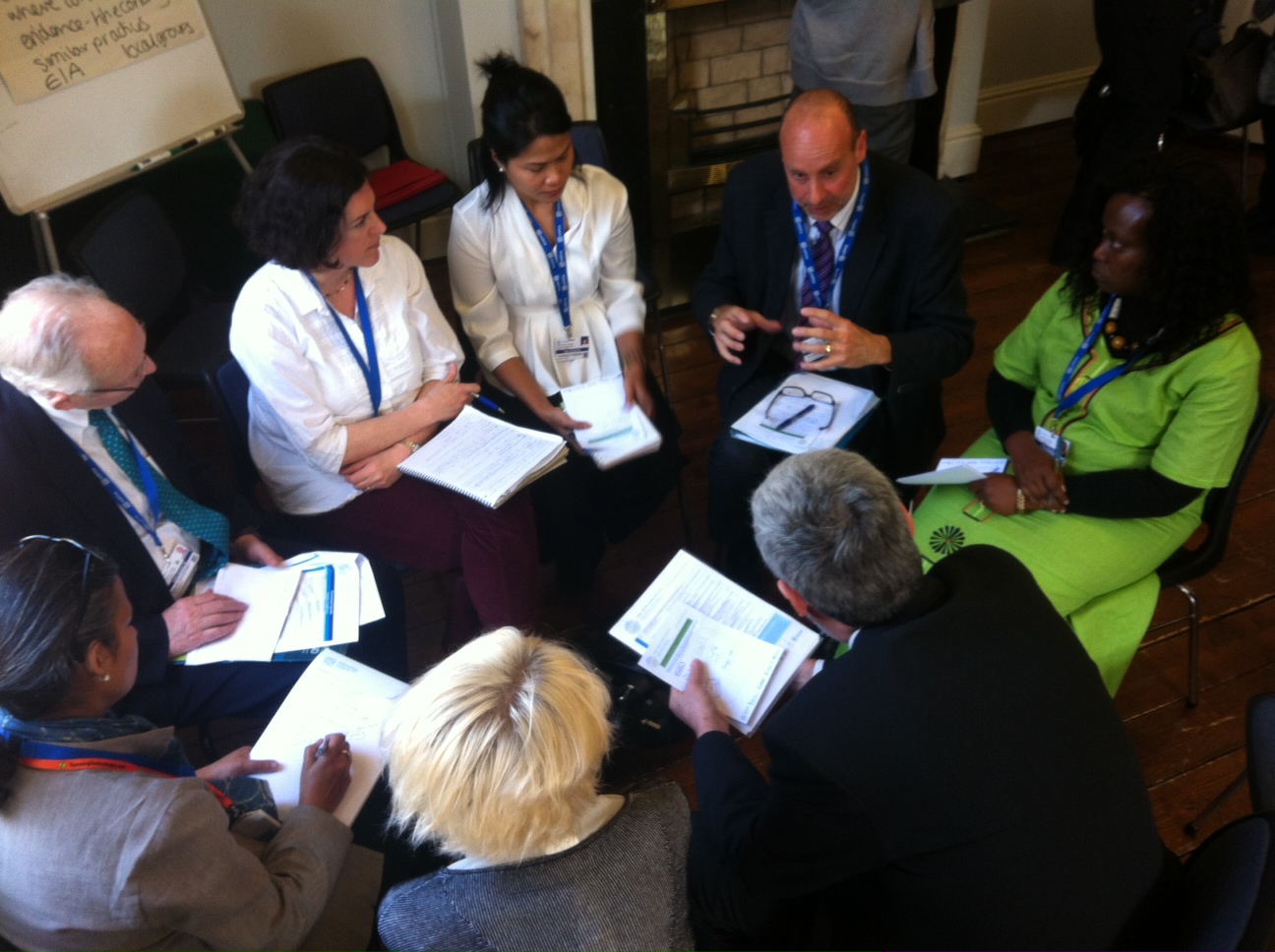
By Shauna Monkman
Adaptation in times of change and uncertainty is characterized by the ability to learn and unlearn quickly. This requires robust innovation systems. According to John Gribbin, healthy systems are those that make the ‘right connections’. In his book ‘Deep Simplicity’, he states, “A heap of wheels and levers would not in itself be a complex system, even if the heap consisted of all the pieces needed to make a racing bike. The simple pieces have to be connected together in the right way, so that they interact with one another to produce something that is greater than the sum of its parts.”
The Hunger, Nutrition and Climate Justice Dialogue in Dublin endeavored to improve connections across the food system by bringing farmers, policy makers, civil servants, scientists and select business leaders together in order to share knowledge and perspectives. The twin aims of the conference were to highlight examples of how science and policy makers are successfully working with local populations - especially farmers - and to encourage better linking between the issues of hunger, nutrition and climate justice – particularly in policy making.
The conference explicitly stressed the importance of deep linkages between farmers and science in order to spur innovation. One of its core goals was on making ‘the right’ connections between local actors and policy makers. Research supports this strategy. For example, Cozzens and Catalan’s work on complex water systems shows that communities must define their own needs, set their own priorities, choose their own technologies, and make the key decisions about design of systems they are going to use. “If they do not, the systems will fail.” (Global Systems of Innovation, 2011) The message in Dublin was clear: listening and learning from local communities in order to better understand realities and needs is a key lever in encouraging successful innovation strategies in food systems
The conference’s Learning Circles represented a key avenue for promoting these ‘right connections.’ Learning Circles were break out sessions in which local stakeholders presented case studies to smaller groups of conference participants, followed by facilitated discussions. I was curious to know how the Learning Circles stacked up in terms of not only connecting different people together, but in delivering ‘the right connections’ necessary for adaptation and innovation. I had the chance to explore this question with Dr. Robin Bourgeois, Senior Expert of the Foresight and Development Policies at the Global Forum on Agricultural Research (GFAR). Dr. Bourgeois’s role at GFAR is to strengthen and foster collective actions in foresight so that the GFAR constituencies - such as farmer organizations, NGOs, and research organizations – have the necessary capacity to shape research and innovation priorities. Dr. Bourgeois regularly attends multi-stakeholder forums where issues related to the future of agriculture are discussed. A short transcript of our conversation follows:
SLM: “Could you share your thoughts regarding the Learning Circles? How were they different or the same as what you have seen before?”
RB: “I think the idea of Learning Circles was good. Giving people coming from the field the opportunity to share their own experiences, in their own language, was different from what we generally see in international conferences. However, given the time frame, there were too many great speakers and not enough time to interact.”
SLM: “Could you expand a little on the interaction element of the Learning Circles? How did you find the structure? (Case study delivery, discussion in small groups, sharing of key points in larger groups, aggregation of Learning Circle key points).”
RB: “The trio discussions were great, and when we went to groups of six that was also good. But when we aggregated the process, leading to a report by the Champion, who was responsible for reporting the outcomes of the Learning Circles in the plenary session, this induced a drastic loss in the richness of thinking we had. This aggregation process lost track of the golden nuggets. Instead of highlighting creativity and alternative visions and ideas, the concepts that were aggregated became too generalized.
SLM: “What, to you, resulted from the Learning Circles process?
RB: Compared to the wealth of the cases and discovery, the rich content of the Learning Circles was diluted. The conversation we had did not fully translate into out-of-the-box thinking.”
SM: “What questions does this bring up for you?”
RB: “A key question is, ‘how do you pay attention to alternative/creative ideas?’
SM: “What are your recommendations for improvement?”
RB: “I would suggest to try ‘Golden Nugget Diggers’ instead or in addition to Champions.
Sometimes the crazy and weird ideas are those we should pay the most attention to – both in terms of thinking of the future, and of inspiring innovations that dramatically improve and alter our world. Truth, as the adage goes, is often stranger than fiction. It remains to be seen if ‘golden nuggets’ will be incorporated in the post-conference communications material. The challenge lies in finding ways to collect and store golden nuggets and to share and match these to the ‘right’ people in order to spark innovation and by extension, adaptation and system resilience in the face of increasing uncertainty and change.
Shauna Monkman is a doctoral student at University of Oxford’s School of Geography and the Environment, former Vice President of Global Online for the Financial Times Ltd., and founder and CEO of Sooth Corp, a social enterprise dedicated to understanding and finding solutions to hunger via innovative ICT tools.
